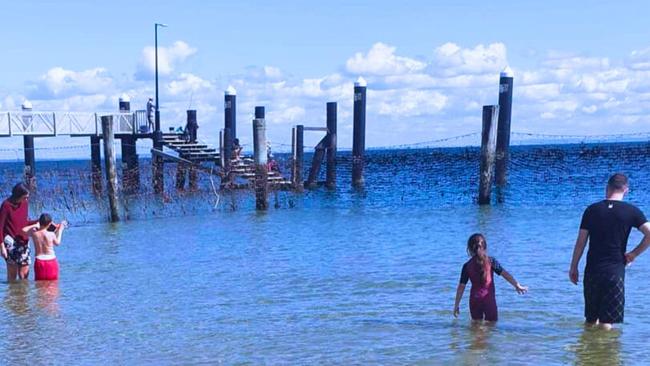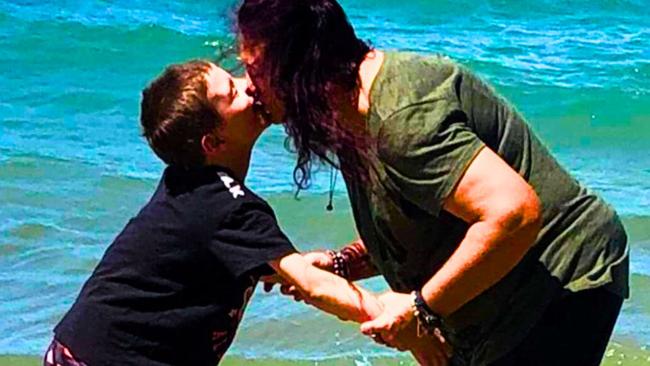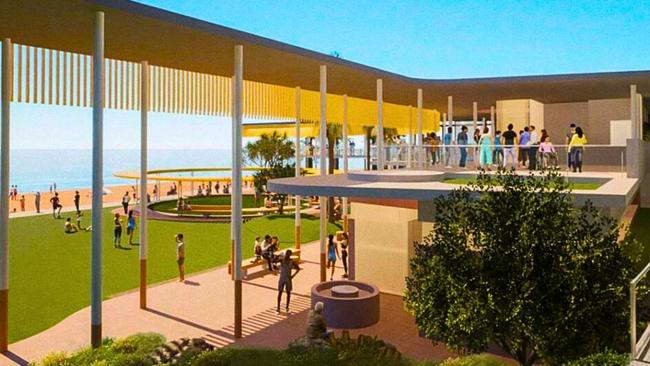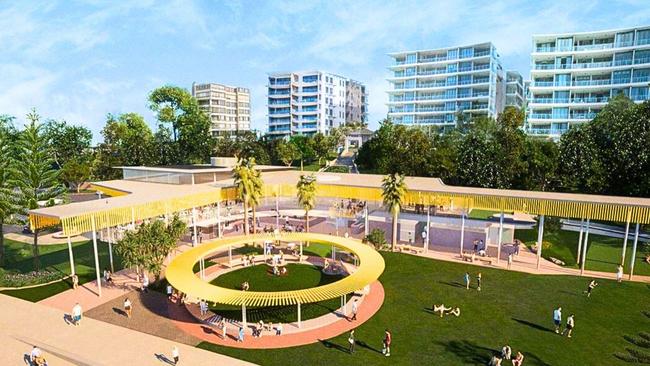Push for swimming enclosure at Suttons Beach after NDIS provider refuses autistic boy a lifejacket
With summer less than two weeks away, one family is calling for a beach enclosure to be built north of Brisbane after an NDIS provider refused a request for a lifejacket for their autistic son.

Lifestyle
Don't miss out on the headlines from Lifestyle. Followed categories will be added to My News.
A young boy’s near-death experience while swimming at a beach north of Brisbane has triggered calls for the state government to install swimming safety enclosures.
Redcliffe’s Jai Warner, who is non-verbal, was swimming at the popular Suttons Beach with his carer two years ago when the excited 12-year-old unintentionally dragged his female support worker into deep waters.
Luckily, an off-duty lifeguard heard the carer’s cry for help and rushed into the water to bring the pair safely back to dry land.
Although nobody was injured, Jai’s mum, Cheryl Warner, said the near-death experience not only highlighted the area’s lack of swimming enclosures but also flaws in the NDIS funding processes arrangements.

Mr Warner said it was ridiculous there were no swimming enclosures along the Redcliffe peninsula and banned her son from swimming in open waters.
However, after a year of not swimming because there were no enclosures, Ms Warner applied to NDIS-related agency, Plan Partners, this month asking for $395 to buy Jai a lifejacket, a bridle and water boots.
“He loves swimming – it’s his favourite pastime and he really loves splashing around in the water and is good exercise and allows him to relax,” Ms Warner said.
“We thought a lifejacket would mean he could at least have a swim and get back into the water.
“Unfortunately, my request was refused which means Jai will not be able to go swimming over summer.”

Ms Warner was told changes to the NDIS Act in October restricted funding equipment unless it was deemed medically necessary and to get the lifejacket she had to get written approval from her NDIS provider that a lifejacket was required for health reasons.
Government definitions of NDIS supports, which clarify what NDIS funds are for, do not mention life jackets even though some recreational equipment is listed.
The NDIA, the agency that administers the NDIS, said it had not received a request to approve funding for a lifejacket for Jai, nor had it provided any instruction regarding tethering the teen while swimming.
Ms Warner wrote to NDIS-approved occupational therapist Matt Maree, who said he was concerned about his own liability.
“I understand that other OTs may have done this in the past, however, this is most certainly outside of my scope of practice,” Mr Maree said.
“I wouldn’t even know where to start. The issue is if something went wrong and the device did not work as intended, I would be liable,” he said.
Psychologist and behaviour support practitioner Wan Garrett said the NDIS should not fund the lifejacket as it was an “off the shelf” option, even though it had worked well for Jai in the past.
“I’ve observed Jai in the wetsuit 18 months ago and there were no identified risks that it can be used inappropriately – it can only go on one way,” Ms Garrett said.
“Jai continues to require support in the water, with full supervision at all times, as all parties are aware that Jai cannot swim.
“The ongoing requirement for the use of the wetsuit is that it fits him properly, for his height and weight, in order to do as intended.
“But these recommendations do not alter the NDIS’s stance on funding off-the-shelf or disability specific adaptive equipment, due to recent changes to the NDIS Act.”
Ms Warner lifted Jai’s swimming ban when the family recently holidayed on North Stradbroke Island where there are swimming safety enclosures.
“It meant Jai could go out safely by himself as far as the nets would allow,” Ms Warner said.
“He absolutely loved it but it was disappointing to return to the mainland where there are no enclosures nearby – and no such facility at Suttons Beach.
“I think it’s ridiculous that there are dog beaches but they don’t have a safety enclosure for people – from little kids all the way through to the elderly.”
Moreton City Council acknowledged Ms Warner’s request for Suttons Beach.
Beach enclosures are not under the jurisdiction of local government as enclosures extend beyond the high water mark on open coasts or bays, they are legislated by the state.
The council has 15 dog beaches but no swimming enclosures.

“Beach enclosures are not under the jurisdiction of local government as enclosures extend beyond the high water mark on open coasts or bays, they are legislated by the state,” the council said.
“We have no record of previous requests for a beach enclosure in the vicinity of Suttons Beach.
“Beach enclosures are an expensive asset, are complicated to deliver, and require constant maintenance.
“A simple comparison between the number of dog beaches in any council area compared to the number of swimming enclosures is an unreliable measure and does not consider the full situation.

“City of Moreton Bay is proud of its beautiful beaches, numerous water parks, wading pools, lagoon, aquatic centres and swimming pools for residents and visitors to enjoy, with many of them free to use.
“When swimming at beaches, we encourage people to swim between the flags and use patrolled beaches.”
The council also has an accessible beach policy and provides beach wheelchairs and beach matting at Suttons Beach, where the council is carrying out $17 million in upgrades after the demolition of the historic Suttons Beach swimming pavilion.
The works included demolishing the crumbling pavilion in March, 2024, and the construction of a new state-of-the-art two-storey building, which has been designed.
Maritime Safety Queensland and the Transport and Main Roads Department were contacted for comment about swimming enclosure plans.
Maritime Safety Queensland said the matter did not fall under its responsibilities and recommended getting in touch with the relevant local council.





